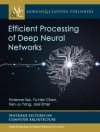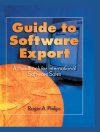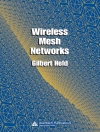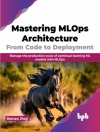Secure your understanding of vital security and forensic strategies by purchasing Securing the Digital Frontier: Threats and Advanced Techniques in Security and Forensics, a definitive guide that empowers you to protect sensitive information and tackle cyber threats with insights from leading experts and real-world case studies.
In the field of security and forensics, it’s crucial to implement strong security measures to protect sensitive data and effectively respond to cyber incidents. Digital forensics is vital for analyzing cyber threats, where experts use advanced techniques to scrutinize digital artifacts, system logs, and network traffic. This approach helps reconstruct incidents, pinpoint vulnerabilities, and support legal actions, ensuring the confidentiality, integrity, and availability of crucial data in our rapidly evolving digital world.
This book provides an in-depth look at security and forensics, pooling knowledge from top experts across various cybersecurity domains. It focuses on real-world applications and case studies, offering valuable insights for protecting information and responding to digital crimes. Designed for cybersecurity professionals, digital forensics investigators, legal teams, and academics, this comprehensive guide is a key resource for anyone looking to deepen their understanding of modern digital forensics and cybersecurity challenges.
Tabella dei contenuti
Preface xix
1 Pegasus—A Menace to Privacy and Security 1
Raunaq Khurana and Shilpa Mahajan
1.1 Introduction 1
1.2 Working of Pegasus 4
1.2.1 Pegasus Attacking i OS 8
1.2.2 Pegasus Impacting Android 9
1.2.3 Differentiating Android and i OS Pegasus 10
1.3 Literature Review 10
1.4 Methodologies 12
1.5 Pegasus Implantation Techniques 12
1.6 Mitigation Measures 13
1.7 Conclusion 14
References 14
2 Data Privacy and Compliance in Information Security 17
Rakesh Nayak, Umashankar Ghugar, Praveen Gupta, Satyabrata Dash and Nishu Gupta
2.1 Introduction 18
2.2 Discussion on Risks, Consequences, and Security Measures for Data Privacy 19
2.2.1 Getting Around the Compliance Landscape in Information Security 22
2.2.2 Legal Frameworks: Protecting Privacy Rights, CCPA, and GDPR 23
2.2.2.1 General Data Protection Regulation (GDPR) 23
2.2.2.2 California Consumer Privacy Act (CCPA) 24
2.2.3 Challenges in Achieving Compliance and the Repercussions of Noncompliance 24
2.2.4 Principles to Follow to Ensure Data Privacy and Compliance 26
2.2.5 Integrated Approach: Audits, Access Controls, Encryption, and Privacy Awareness 27
2.3 Data Privacy and Compliance in Information Security: The Changing Nature 28
2.4 Continuous Learning and Adaptation: Keeping Pace with Emerging Technologies and Regulations 31
2.5 Conclusion 32
References 33
3 Unveiling Cyber Threats and Digital Forensics 35
Nidhi Gupta, Arpita Trivedi, Parveen P. Terang and Hasmat Malik
3.1 Information Security 36
3.1.1 Issues and Challenges 36
3.1.2 Digital Forensics 37
3.2 Cyberattacks 39
3.2.1 System Exploitation 39
3.2.2 Phishing 40
3.2.3 Man in the Middle Attack 41
3.2.4 Denial of Service 42
3.2.5 Ransomware 43
3.3 Protection Techniques 44
3.3.1 Firewalls 45
3.3.2 Threat Modeling 46
3.3.3 Penetration Testing 48
3.3.4 Encryption 50
3.3.5 Access Control 52
3.4 Internet of Medical Things 53
3.5 Conclusion 54
References 54
4 A Customised Privacy Preservation Mechanism for Cyber-Physical Systems 59
Manas Kumar Yogi and A.S.N. Chakravarthy
4.1 Introduction 59
4.1.1 Role of CPS 60
4.1.2 Privacy Preservation in CPS 61
4.1.3 Motivation for CPS Privacy 62
4.2 Background 64
4.2.1 Current Trends in CPS Privacy 64
4.2.2 Trade-Off Between Privacy and Data Utility 65
4.2.3 Challenges in Variable Differential Privacy Implementation 66
4.3 Motivation 73
4.3.1 Variants of Differential Privacy 73
4.3.2 Impact of Noise Addition in Variants of Differential Privacy 74
4.4 Proposed Mechanism 76
4.4.1 Algorithm: Customized Differential Privacy 78
4.4.2 Algorithm: Privacy-Utility Balancing in Differential Privacy 80
4.5 Experimental Results 81
4.5.1 Interpretations of the Results 82
4.5.2 The Advantages of Using Customized Privacy Budgets are Evident in the Following Ways 84
4.6 Future Directions 84
4.7 Conclusion 88
References 88
5 Securing the Future: Emerging Threats and Countermeasures in Cryptography 91
Debosree Ghosh, Kishore Ghosh, Chandrima Chakraborty, Atanu Datta and Somsubhra Gupta
5.1 Introduction 92
5.2 Quantum Computing and Post-Quantum Cryptography 92
5.3 Cryptanalysis: Cracking the Code 93
5.4 Side-Channel Attacks: Stealthy and Insidious 95
5.5 Fault Attacks: Exploiting Implementation Weaknesses 96
5.5.1 Permanent Fault Attacks 97
5.5.2 Transient Fault Attacks 97
5.6 Hardware Security Modules (HSMS) 97
5.6.1 HSMs Offer a Range of Features that Make Them a Critical Component of Modern Information Security Systems 98
5.6.2 HSMs Applications in Various Industries and Scenarios 99
5.7 Secure Implementations: From Theory to Reality 99
5.8 A Holistic Approach to Cryptography 99
5.9 Quantum Key Distribution (QKD) 100
5.10 Internet of Things in Cryptography 102
5.11 Artificial Intelligence in Cryptography 103
5.12 Cryptarithmetic 104
5.13 The Road Ahead: Future Trends and Prospects 105
5.14 Conclusion 106
Bibliography 106
6 Cyber Threats and Its Impact on Electronic Transactions 109
Ramalingam Dharmalingam and Vaishnavi Dharmalingam
6.1 Introduction 109
6.2 Digital Transformation and Cybersecurity 111
6.3 Evolution of Cyber Threats 112
6.3.1 Telephone Hacks in the 1950s 113
6.3.2 Introduction of Computer Virus in the 1970s and 1980s 113
6.3.3 Widespread Malware Attacks in the 1990s 114
6.3.4 The Turn of the Century 114
6.3.5 Threat to the Connected “Things” in the 2020s 115
6.4 Emerging Cyber Threats 115
6.4.1 Malware Delivery 116
6.4.2 Fileless Malware 119
6.4.3 Legitimate Service Abuse 119
6.4.4 Botnet Renovations 119
6.4.5 Search Engine Optimization and Malicious Advertising 120
6.4.6 Security Tools as a Malware 120
6.4.7 Web Shells Deep Dive 121
6.4.8 Domain-Generating Algorithms 121
6.4.9 AI-Enabled Cyber Attacks 121
6.5 Impacts of Data Breaches in the Financial Sector 121
6.6 Cybersecurity Standards, Frameworks, and Benchmarks 124
6.7 Innovative Approaches to Cyber-Incident Management 127
6.7.1 International and Multistakeholder Collaboration 127
6.7.2 Cognitive Analytics in Cybersecurity Management 128
6.7.3 Security Automation for Combating Cyberattacks 128
6.8 Conclusion 129
References 129
7 A Robust Model for Enabling Insider Threat Detection and Prevention: Techniques, Tools, and Applications 133
A. Sheik Abdullah, Shivansh Dhiman and Arif Ansari
7.1 Introduction 134
7.2 Structure 135
7.3 Impact of Insider Threats on Modern Organizations 137
7.3.1 Types of Insider Threats 137
7.3.2 Importance of Understanding the Impact of Insider Threats 139
7.3.3 The Magnitude of the Threat 140
7.3.4 Why are Insider Threats so Dangerous? 141
7.5 Challenges in Insider Threat Detection 142
7.6 Techniques for Insider Threat Detection 144
7.7 Robust Model 146
7.7.1 Shortcomings in Current Insider Threat Detection Models 147
7.7.2 Required Algorithms and Tools for Robust Model 148
7.7.2.1 Supervised Learning Model 149
7.7.2.2 Complex Event Processing 150
7.7.3 Integration Model 152
7.7.4 Pseudocode 154
7.8 Application and Case Studies 156
7.8.1 Introduction 156
7.8.2 How the Integration Works 156
7.8.3 Case Studies 157
7.9 Other Important Insider Threat Prevention Strategies 158
7.10 Ethical Considerations 160
7.11 Future Trends 163
7.12 Conclusion 165
References 166
Authored Book 167
References 167
8 Digital Vulnerabilities Unveiled: A Multidisciplinary Exploration of Emerging Threats to Security and Privacy in the Age of Networked Communication 169
Priya Sachdeva and Archan Mitra
8.1 Introduction 170
8.1.1 Objectives 171
8.2 Theoretical Foundation 172
8.2.1 Conceptual Foundations 172
8.2.2 The Literary Nexus 173
8.3 Methodological Framework 174
8.3.1 Data Collection 174
8.3.2 Data Analysis 175
8.3.3 Integration of Multidisciplinary Perspectives 175
8.3.4 Ethical Considerations 175
8.4 Emergent Themes 176
8.4.1 Misinformation and Fake News 176
8.4.2 Data Breaches Put Personal Information at Risk 176
8.4.3 The Role of Humans in Phishing and other Forms of Social Engineering 177
8.5 Interdisciplinary Insights 178
8.5.1 Connecting Threads 178
8.5.2 Dialogue Across Disciplines 178
8.6 Pedagogical Implications 179
8.6.1 The Development of Curriculum 179
8.6.2 Education that Promotes Ethical and Effective Communication 180
8.7 Findings and Discussion 181
8.7.1 Survey Findings 181
8.7.2 Findings from the Interview 181
8.7.3 Discussion 182
8.8 Integration and Synthesis 185
8.8.1 Bringing Together Multidisciplinary Perspectives 185
8.8.2 Policy and Practice Recommendations 186
8.9 Conclusion 187
References 188
Appendix A: Survey Instrument 190
9 Tools of Emancipation as Global Web and its Digital Ecosystem: Steering Io T Landscape, Cloud Computing Unravel Safe Spaces Lensing New Cyber Risks and Emerging Threats 197
Bhupinder Singh and Christian Kaunert
9.1 Introduction 198
9.1.1 Background of Study 199
9.1.2 Objectives 200
9.1.3 Scope of the Study 200
9.1.4 Structure of the Chapter 201
9.2 Tools of Emancipation on the World Wide Web: Conceptual Framework and Definition 202
9.2.1 Historical Evolution 202
9.2.2 Contemporary Significance 203
9.3 Io T Landscape and Its Overview: Opportunities and Challenges 203
9.4 Cloud Computing: Pillar for Safe Spaces Protection 204
9.4.1 Fundamental Concepts of Cloud Computing 205
9.4.2 Security Aspects of Cloud Services 206
9.4.3 Cloud-Based Solutions for Safe Spaces 206
9.5 Cyber Risks and Emerging Threats—Current Landscape of Cyber Threats 206
9.6 Tools of Emancipation: Digital Tools for Positive Purposes and Potential for Using Technology 207
9.7 Assimilating Tools of Emancipation, Cloud Computing, and Io T 208
9.8 Embryonic Updated Technologies and Future Tendencies 209
9.9 New Cyber Risks and Emerging Threats 210
9.9.1 Policy Implications, Societal and Ethical Considerations Concerning Safe Spaces Lensing New Cyber Risks and Emerging Threats 211
9.10 Conclusion and Future Scope 212
References 213
10 Io T and Smart Device Security: Emerging Threats and Countermeasures 217
Geo Francis E., S. Sheeja, Antony John E.F. and Jismy Joseph
10.1 Introduction to Io T and Smart Devices 217
10.1.1 Definition and Scope 220
10.1.2 Growth and Importance of Io T 221
10.1.3 Smart Device Landscape 222
10.2 Vulnerabilities in Io T Devices 223
10.2.1 Insecure Device Design and Configuration 224
10.2.2 Weak Authentication and Authorization 224
10.2.3 Lack of Device Updates and Patch Management 225
10.3 Emerging Threats in Io T Security 226
10.3.1 Botnets and DDo S Attacks 226
10.3.2 Data Breaches and Privacy Risks 226
10.3.3 Physical Damage and Safety Concerns 227
10.4 Attack Vectors in Io T 228
10.4.1 Network Exploitation 228
10.4.2 Firmware and Software Exploits 229
10.4.3 Social Engineering and Phishing 229
10.5 Countermeasures for Io T Security 230
10.5.1 Secure Device Design Principles 230
10.5.2 Authentication and Encryption 231
10.5.3 Network Segmentation and Monitoring 231
10.5.4 Security Updates and Patch Management 232
10.6 Case Studies in Io T Security 232
10.6.1 Notable Io T Security Incidents 233
10.6.2 Successful Io T Security Implementations 234
10.7 Future Trends and Challenges in Io T Security 236
10.7.1 Artificial Intelligence and Machine Learning in Io T Security 236
10.7.2 Regulatory and Legal Considerations 236
10.7.3 Securing Emerging Io T Technologies 237
10.8 Conclusion 238
10.8.1 Recap of Key Points 238
10.8.2 Importance of Io T Security Implementation 239
10.8.3 Future Outlook for Io T Security 239
References 240
11 Secured Io T with LWC and Blockchain 243
Srishti Priya Chaturvedi, Ajay Yadav, Santosh Kumar and Rahul Mukherjee
11.1 Introduction 244
11.1.1 Io T Architecture 247
11.1.1.1 Three-Layered Io T Architecture 247
11.1.1.2 Five-Layered Io T Architecture 248
11.1.1.3 Cloud and Fog/Edge-Based Io T Architecture 249
11.2 Applications of Io T 251
11.2.1 Smart Home 251
11.2.2 Smart Healthcare 252
11.2.3 Industrial Io T 252
11.2.4 Smart Agriculture 252
11.2.5 Smart Mobility 252
11.2.6 Smart Grid 253
11.2.7 Environment Monitoring 253
11.3 Different Security Attacks on Io T Layers 254
11.3.1 Active Attack 254
11.3.1.1 Security Attacks on Perception/ Physical Layer 255
11.3.1.2 Security Attacks on Network Layer 256
11.3.1.3 Security Attacks on Processing Layer 257
11.3.1.4 Security Attacks on Application Layer 257
11.3.1.5 Security Attacks on Business Layer 258
11.3.2 Passive Attack 259
11.3.2.1 Eavesdropping 259
11.3.2.2 Traffic Analysis 259
11.4 Solution to Io T Security Attacks 259
11.4.1 Io T Security Using Blockchain Technology 259
11.4.1.1 Network Layer 260
11.4.1.2 Consensus Layer 260
11.4.1.3 Data Layer 260
11.4.1.4 Execution Layer 261
11.4.1.5 Application Layer 261
11.4.2 Blockchain-Based Io T Applications 261
11.4.2.1 Cyber-Physical Systems 262
11.4.2.2 Intelligent Transportation System 262
11.4.2.3 Smart City 262
11.4.2.4 Supply Chain Management 262
11.4.2.5 Underwater Things 262
11.4.3 Io T Security Using Lightweight Cryptography 262
11.4.3.1 Lightweight Cryptography 264
11.5 Conclusion 265
References 266
12 Social Engineering Attacks: Detection and Prevention 269
Rajat Singh, Priyanka Soni and Animaw Kerie
12.1 Introduction 269
12.1.1 Strong Affect 270
12.1.2 Overloading 271
12.1.3 Reciprocation 271
12.1.4 Deceptive Relationship 271
12.1.5 Diffusion of Moral Duty and Responsibility 271
12.1.6 Authority 271
12.1.7 Consistency and Commitment 272
12.2 Life Cycle of Social Engineering 272
12.2.1 Selection of Target and Reconnaissance 272
12.2.2 Planning and Preparation 273
12.2.3 Initiation of Contact 273
12.2.4 Fostering Trust and Manipulation 273
12.2.5 Elicitation and Exploitation 273
12.2.6 Launch of Attack 273
12.2.7 Maintaining the Access 274
12.2.8 Covering the Trails 274
12.3 Types of Social Engineering 274
12.3.1 Phishing 275
12.3.2 Vishing 275
12.3.3 Grooming 275
12.3.4 Identity Theft 275
12.3.5 Quid Pro Quo Attacks 276
12.3.6 Dumpster Diving Attacks 276
12.3.7 Diversion Theft Attacks 276
12.3.8 Tailgating 276
12.3.9 File Masquerade 277
12.3.10 Water-Holing 277
12.4 Social Engineering Attacks Using Advanced Techniques 277
12.5 Social Engineering Attack Detection Models 278
12.5.1 Seadm 278
12.5.2 SEADMv 2 279
12.5.3 SEADer 280
12.5.4 SEADer++ V 2 281
12.6 Detection of Social Engineering Links 281
12.7 Preventive Approaches 282
12.7.1 Siem 282
12.7.2 Next-Gen Cloud-Based WAF 283
12.7.3 “Human-as-a-Security-Sensor Framework” 283
12.7.4 Awareness Programs 284
12.7.5 Prevention Protocols 284
12.8 Preventive Measures Against Social Engineering Attacks 285
12.8.1 Avoid Clicking Unknown Links 285
12.8.2 Use Multi-Factor Authentication 286
12.8.3 Verify Email Sender’s Identity 286
12.8.4 Check for SSL Certificate 286
12.8.5 Check for Updates 286
12.8.6 Pay Attention to Your Digital Footprint 286
12.9 Conclusion 286
References 287
13 Multilayer Perceptron of Occlusion and Pose-Sensitive Ear Attributes for Social Engineering Attack Mitigation 291
O. Taiwo Olaleye, Oluwasefunmi Arogundade, Adebayo Abayomi-Alli, Wilson Ahiara, Temitope Ogunbiyi, Segun Akintunde, Segun Dada and Olalekan Okewale
13.1 Introduction 292
13.1.1 Biometric Authentication and Social Engineering Attacks 293
13.1.1.1 Strengths of Biometric Authentication 293
13.1.1.2 Weaknesses of Biometric Authentication 293
13.2 Literature Review 295
13.2.1 Black Ear Inclusivity in Biometric Authentication Systems 296
13.3 Materials and Methods 299
13.3.1 Data Acquisition 299
13.3.2 Feature Extraction 299
13.3.2.1 Color Layout Filter 299
13.3.2.2 Edge Histogram Filter 300
13.3.3 One-Hot Encoding 301
13.3.4 Predictive Analytics by the Perceptron 303
13.3.5 Parameter Optimization of MLP 303
13.4 Result and Discussion 305
13.4.1 Performance Metrics of MLP on Occlusion and Pose Sensitive Ear Facial Dataset 305
13.4.2 Performance Metrics of MLP on Occlusion and Pose Sensitive Ear Facial Dataset After One-Hot Encoding 306
13.4.3 Performance Metrics of MLP on Occlusion and Pose Sensitive Ear Facial Dataset with Parameter Optimization 307
13.4.4 Performance Metrics of MLP on Occlusion and Pose Sensitive Ear Facial Dataset After One-Hot Encoding with Parameter Optimization 308
13.4.5 Overall Evaluation of MLP on the Experimental Measures 309
13.5 Conclusion 311
References 312
14 Study and Analysis of Cyberbullying Message Detection and Prevention Using Machine Learning Techniques 315
S. Shanmugam, S. Gunasekaran and N. Anusha
14.1 Introduction 316
14.2 Literature Survey 318
14.2.1 Identifying Cyberbullies Through Twitter Data Analysis 318
14.2.2 Cyber Bullying Detection on Social Media Using Machine Learning 318
14.2.3 Cyberbullying in Schools: A Research of Gender Differences 319
14.2.4 Automated Detection of Cyberbullying Using Machine Learning 319
14.3 Implementation of Cyberbullying Model 320
14.3.1 Dataset Description 320
14.3.2 Architecture and Functionalities of the Proposed System 321
14.3.2.1 NLP Toolkit for Implementation 322
14.3.3 Performance Evaluation Measures 324
14.4 Evaluation and Comparison of Machine Learning Techniques for Cyber Bullying 325
14.5 Conclusion 329
References 329
15 Future Directions in Digital Forensics and Cybersecurity 333
Elipe Arjun and Priyanka Singh
15.1 Overview of Digital Forensics and Cyber Forensics 333
15.2 Introduction 335
15.2.1 Rapid Technological Evolution 337
15.2.2 An Ever-Changing Threat Landscape 337
15.3 Technologies and Their Impact 337
15.3.1 Balancing Opportunity and Threat 337
15.4 Impact of Emerging Technologies on Digital Forensics and Cybersecurity 338
15.4.1 Artificial Intelligence (AI) and Machine Learning (ML) 338
15.4.2 Quantum Computing 340
15.4.3 5G Technology 340
15.4.4 Blockchain Technology 340
15.4.5 Biometric Technologies 340
15.4.6 Cloud Computing 341
15.4.7 Io T (Internet of Things) 341
15.4.8 Automated Threats and Botnets 342
15.4.9 Augmented Reality (AR) Virtual Reality (VR) and Autonomous Systems and AI-Driven Attacks 342
15.5 Cybersecurity and Digital Forensics: Threats and Opportunities 342
15.5.1 Threats 343
15.5.2 Opportunities 344
15.6 Future of Digital Forensics 346
15.6.1 Emerging Trends and Future Directions in Digital Forensics 347
15.6.2 Potential Benefits and Challenges of These Emerging Trends of Digital Forensics 348
15.6.3 Significant Challenges in Modern Digital Forensics, Both from an Ethical and Technological Perspective 349
15.7 The Future of Cybersecurity 350
15.7.1 Overview of Future Directions and Emerging Trends in Cybersecurity 350
15.7.2 Emerging Trends and Potential Benefits Include 351
15.7.3 Challenges in Cybersecurity 352
15.8 Collaboration and Interdisciplinary Approaches 353
15.8.1 Ways in Which Digital Forensics and Cyber Security Might Collaborate 353
15.9 Ethics and Human Factors in Future Digital Forensics and Cybersecurity 356
15.9.1 Why Do we Need Ethics in Technology? 356
15.9.2 What Does Ethics Have to Do with Cybersecurity and Digital Forensics? 357
15.9.3 Potential Benefits 358
15.10 Challenges and Opportunities of Digital and Cyber-Forensics 359
15.10.1 Challenges 359
15.10.2 Opportunities 360
15.11 Conclusion 360
15.11.1 Summary of Key Points 361
15.11.2 Discussion of Importance 361
15.11.3 Conclusion and Implications for Future Research and Practice 362
References 363
16 Tomorrow’s Shields: Exploring Future Trends in Cyber Security and Forensics 367
Mridu Sharma, Ravshish Kaur Kohli and Kunal Sharma
16.1 Introduction 368
16.2 Recent Digital Forensic Trends 369
16.2.1 Cloud Forensics 369
16.2.2 Social Media Forensics 370
16.2.3 Io T Forensics 372
16.3 Threats Faced by Digital Forensics 374
16.3.1 Technical Challenges 374
16.3.2 Operational Challenges 375
16.3.3 Personnel-Related Challenges 376
16.4 Opportunities 378
16.4.1 USB Forensics 378
16.4.2 Intrusion Detection 379
16.4.3 Artificial Intelligence 380
16.5 Conclusion 382
References 382
Index 387
Circa l’autore
Kavita Sharma, Ph D, is a professor in the Department of Computer Science and Engineering at Galgotias College of Engineering and Technology, Greater Noida, India with over 12 years of research and academic experience. She has also been awarded a research fellowship from the Ministry of Electronics and Information Technology from the Government of India. Additionally, she has four patents (one granted and three published) and one granted design and has published seven books and 45 research articles in international journals and conferences of high repute.
Vishnu Sharma, Ph D, is the Head of Department and a professor in the Department of Computer Science and Engineering at Galgotias College of Engineering and Technology, Greater Noida, India with over 21 years of teaching experience. He has published over 50 research papers on mobile ad-hoc networks and mobile computing in national and international conferences and journals, as well as two books on mobile computing and advanced mobile computing. Additionally, he has organized several national and international conferences and workshops and serves as the editor of IEEE Conference ICCCA proceedings.
Parma Nand, Ph D, is the Dean of Academics at Sharda University, Greater Noida, India. He has over 26 years of teaching, industry, and research experience, emphasizing bridging the gap between academics and industry keeping in mind the growing IT industry in terms of futuristic technologies. Through his work, he has provided consultancy on a number of projects for industries and has delivered many invited and keynote talks at national and international conferences, workshops, and seminars in India and abroad. He has published more than 85 papers in peer-reviewed national and international journals and conferences, as well as two filed patents.
Anil Kumar Sagar, Ph D, is a professor in the Department of Computer Science and Engineering in the School of Engineering and Technology, Sharda University, India with over 20 years of experience in teaching, guiding ten Master’s of Technology and five doctoral candidates in computer science. He also serves as a member of the editorial boards and review committees for many national and international journals and has served as a program and organizing committee member for several conferences.
Gulshan Shrivastava, Ph D, is an associate professor in the Department of Computer Science and Engineering at Galgotias University, Greater Noida, India. He has five patents (four granted, one published) and 55 articles, books, and editorials in international journals and conferences of high repute. He also serves many reputed journals as a guest editor, editorial board member, international advisory board member, and reviewer board member and has delivered expert talks and guest lectures at numerous international conferences.












